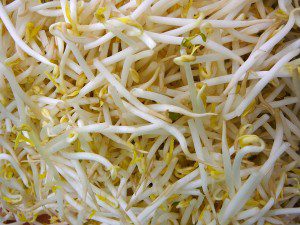

On episode #9 of the podcast This Week in Microbiology, Vincent, Cliff, Elio, and Michael review the outbreak of bloody diarrhea and hemolytic uremic syndrome in Germany caused by Shiga toxin-producing Escherichia coli O104:H4.
[powerpress url=”http://traffic.libsyn.com/twimshow/TWiM009.mp3″]
Click the arrow above to play, or right click to download TWiM #9 (53 MB, .mp3, 76 minutes).
Subscribe to TWiM (free) on iTunes, Zune Marketplace, via RSS feed, by email or listen on your mobile device with the Microbeworld app.
Links for this episode:
- Ecocyc, a database on E. coli
- E. coli outbreak investigations at CDC
- Discussion of E. coli origin (Biofortified)
- Outbreak update at Eurosurveillance
- Summary of outbreak at ProMedMail
- More evidence points to sprouts (CIDRAP)
- Phage on the rampage (NatureNews)
- Letters read on TWiM #9
Send your microbiology questions and comments (email or mp3 file) to twim@microbe.tv, or call them in to 908-312-0760. You can also post articles that you would like us to discuss at microbeworld.org and tag them with twim.

Dear Vincent,
Great episode. I was just thinking that it would be good to hear a more detailed discussion on E. coli as it exhibits such diversity in pathogenicity – then you came up with the goods!
There is one thing I’m not clear on though. What exactly is the difference between the shiga like toxin stx present in this bacterium (O104:H4) and the toxin present in Shigella? I ask because Shigellosis is routinely treated with antibiotics and isn’t associated with haemolytic uraemic syndrome like O104:H4 is.
Thanks.
Hi,
the embedded Player links to the wrong episode (i.e. to TWIM 8). I was really confused why there isn’t a word about E. coli in the episode until i got that 😀
Regards
I am very sorry for the incorrect embedded link – it’s been fixed.
Thanks for pointing it out.
Good question – the shiga toxin in O104:H4 is quite similar to that in Shigella – so that can’t explain the difference in antibiotic use. I believe it is because in O104:H4 the toxin is carried by a prophage, which is induced by antibiotic treatment. In Shigella the toxin is present in the chromosome, and hence not induced by antibiotics.